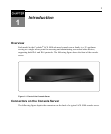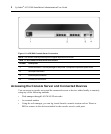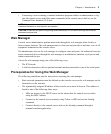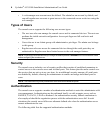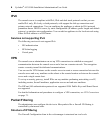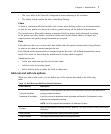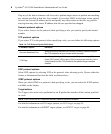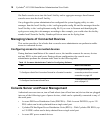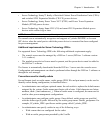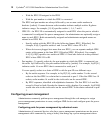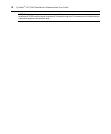
SNMP
The administrator can activate the Simple Network Management Protocol (SNMP) agent that
resides on the console server so that the SNMP agent sends notifications about significant
events or traps to an SNMP management application. The console server SNMP agent supports
SNMP v1/v2 and v3.
For more information, see To configure SNMP: on page 78
Notifications, Alarms and Data Buffering
The administrator can set up logging, notifications and alarms to alert administrators of
problems. System generated messages on the console server and the connected servers or
devices can be sent to syslog servers for handling. The administrator can also configure data
buffering to store data from communication on serial ports for monitoring.
Data from communication with serial-connected consoles can be stored locally in the console
server’s flash memory or remotely either on an NFS server or a syslog server.
Syslog servers
Messages about the console server and connected servers or devices can be sent to central
logging servers, called syslog servers. Console data from devices connected to serial ports can
be stored in data buffer files on syslog servers. By default, logging and data buffering are not
enabled.
Prerequisites for logging to syslog servers
Before configuring syslogging, ensure the syslog server is pre-configured with a public IP
address and is accessible from the console server. The system administrator must obtain both the
IP address of the syslog server from the syslog server’s administrator and the facility number for
messages from the console server. Facility numbers are used on the syslog server for handling
messages generated by multiple devices.
Facility numbers for syslog messages
Each syslog server has seven local facility numbers available for its administrator to assign to
different devices or groups of devices, at different locations. The available facility numbers are
local0 through local7.
Example of using facility numbers
The syslog system administrator sets up a server called syslogger to handle log messages from
two console servers. One console server is located in São Paulo, Brazil and the other in
Fremont, California. The syslog server’s administrator wishes to aggregate messages from the
Chapter 1: Introduction 9



